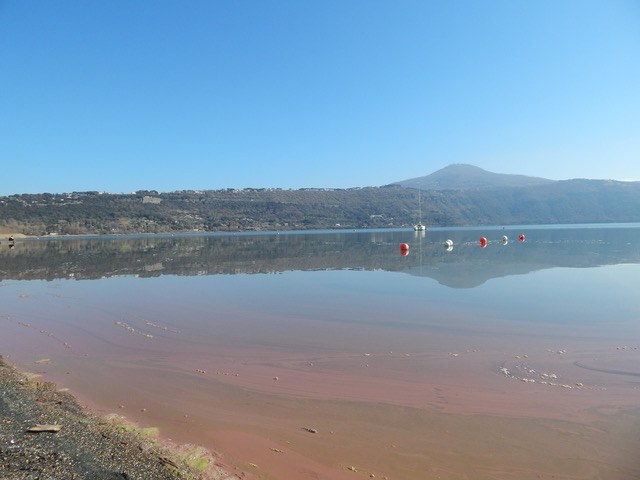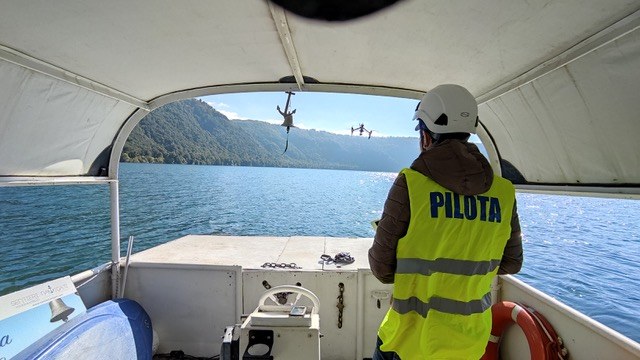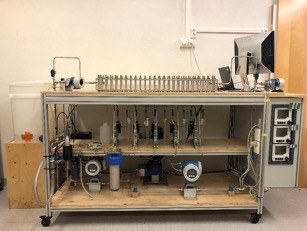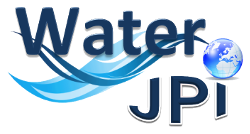Bloowater Project: Supporting tools for the integrated management of drinking water reservoirs contaminated by Cyanobacteria and cyanotoxins
Cyanobacteria, also known as blue-green algae, can rapidly proliferate forming visible blooms under favorable environmental conditions, and release toxic secondary metabolites (cyanotoxins) into the water during their senescence and death.
Periodic blooms of cyanobacteria are common in a wide range of water bodies, in Europe they include fresh waters (natural lakes, rivers, ponds, artificial reservoirs and canals) and brackish waters (the Baltic Sea, estuaries, and lagoons).
Exceptional and prolonged cyanobacterial blooms are increasingly detected in lakes and reservoirs in Europe and throughout the world due to anthropogenic emissions of nutrients and climate change. Therefore, the excessive presence of cyanotoxins forming the so called Harmful Algal Blooms (HABs) in freshwater reservoirs can pose serious risks to human health and activities, aquatic wildlife, domestic animals and also livestock.
For example, in humans cyanotoxins can cause skin irritations after contact and illness if swallowed such as headache, gastroenteritis, and even attack the liver and the brain.
Cyanobacteria occur in waterbodies in all 29 European countries, for example in Italy 12 regions out of 20 are affected by this phenomenon (Figure 1).

Lake Albano during an algal bloom in February 2020
To preserve drinking water and human well-being, effective risk assessment and management strategies need to be planned particularly considering all possible routes of exposure for human beings.
Researchers from Italy (ENEA, UNIVPM), Norway (NIVA) and Sweden (UU) are working together at the WJPI BLOOWATER project, in the effort to develop a low-cost methodological approach based on the integration of monitoring techniques and treatment of drinking water affected by toxic blooms caused by Planktothrix rubescens.
BLOOWATER will integrate innovative methodologies into a multisensor platform to improve water quality through the development of effective low-cost and functional measures into prompt and opportune intervention procedures for efficient and sustainable management of the water resources.
The methodology will be implemented and tested in four lakes, Lakes Erken and Mälaren in Sweden and lakes Albano and Castreccioni-Cingoli in Italy, that are the pilot areas where to carry out the data sampling and test cyanotoxins monitoring and forecasting models under real conditions.
ENEA and UPPSALA University are working to a monitoring system development.
A satellite/drone integrated monitoring system has been defined to combine water sampling and remote data in order to implement and test an early warning system.
The acquisition of remote sensing data will be done from Sentinel-2 satellites.
Sentinel 2 will provide multispectral data for monitoring water surface condition variability, with a high revisit time (with 2 satellites under cloud-free conditions it results in 2-3 days at mid-latitudes). The sensor mounted on the drone is a triple-band multispectral filter camera, the Survey3, Mapir Inc. (figure 2)
The water samples are processed in the laboratory for the analysis of nutrients (nitrogen compounds and phosphates), study of the phytoplankton population and measurement of the total chlorophyll concentration by Phyto-PAM-Phytoplankton & Photosynthesis Analyzer (Heinz Walz GmbH, Effeltrich, Germany); as well as filtration and extraction of photosynthetic pigments and spectrophotometer analysis.

Drone flying on lake Albano in November 2020
As a part of the TREATMENT PROCESS COMPARISON activities, UNIVPM and NIVA are conducting tests to assess the appropriateness of using membrane treatment to remove cyanobacteria and their cyanotoxins from contaminated raw water sources instead of conventional treatments such as coagulation, flocculation and filtration that cause cells breaking and cyanotoxins release. Coagulation and flocculation, moreover, require the use of chemicals such as Aluminum sulphate.
NIVA is assessing factors that are believed to determine the removal efficiency and process stability of nanofiltration (NF), a much-applied treatment system (i.e. reference technology) when producing drinking water. Due to the different characteristics and properties of the many variants of cyanobacteria and cyanotoxins, the influence of factors such as pH, presence of natural organic matter (NOM) in the water and in/on the membrane as well as membrane characteristics (pore size and hydrophobicity/hydrophilicity) will be studied using selected cyanobacteria and cyanotoxins. NIVA also assess how the cross-membrane flow rate and the membrane operating pressure may influence the release of intracellular cyanotoxins during treatment.
In parallel to the NF tests, UNIVPM continues the development and testing of the polymer enhanced ultrafiltration (PEUF) system in bench scale.
In the recent years, the complexation-ultrafiltration technique has been shown to be a promising technique for removal of pollutants from water. In particular, the polymer enhanced ultra filtration (PEUF) using natural polymers such as Chitosan can be a novel alternative to treat waters polluted by cyanobacteria reducing both, the equipment and the treatment costs.
In this research, NIVA will contribute with biofouling tests using the long channel membrane test cell (LCMTC) system (Figure 1) specifically developed for such studies. They will, among other factors, assess how the pre-coagulation step influences the fouling rate and the removal efficiencies of selected cyanobacteria and cyanotoxins.

The long channel membrane test cell (LCMTC) system used to study biofouling of membranes. The membrane is 1 m long and has 5 sampling points.
ENEA, Italian National Agency for New Technologies, Energy and Sustainable Economic Development (Italy)
NIVA, Norwegian Institute for Water Research (Norway)
UNIVPM, Polytechnic University of Marche, (Italy)
UU , Uppsala University (Sweden)

